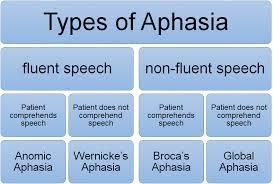The nurse is caring for a client with diabetic ketoacidosis (DKA) receiving intravenous (IV) regular insulin. The most recent potassium was 2.9 mEq/L. The nurse should take which priority action:
Assess the client urine output (UOP)
Obtain a 12-lead electrocardiogram (ECG)
Notify the primary healthcare provider (PMHCP)
Stop the regular insulin infusion
The Correct Answer is C
Choice A rationale: Assessing the UOP is important, but not as urgent as correcting the potassium imbalance.
Choice B rationale: Obtaining a 12-lead ECG can help monitor the cardiac status, but it does not address the cause of the problem.
Choice C rationale: The PMHCP can order potassium replacement to prevent cardiac arrhythmias and other adverse effects of low potassium levels.
Choice D rationale: Stopping the regular insulin infusion can worsen the DKA and increase the risk of cerebral edema and coma.
Nursing Test Bank
Naxlex Comprehensive Predictor Exams
Related Questions
Correct Answer is ["A","D","F"]
Explanation
Choice A rationale: Altered consciousness is a hallmark feature of delirium, where individuals may experience fluctuations in awareness.
Choice B rationale: Delirium typically has an acute onset rather than symptoms developing over months to years.
Choice C rationale: Delirium often has a fluctuating course, rather than a consistent progressive decline.
Choice D rationale: Delirium can result from various factors including fluid/electrolyte imbalances or infections.
Choice E rationale: While these conditions might contribute to cognitive impairments, they are not typically associated with delirium.
Choice F rationale: Delirium can affect judgment, but it's not a defining feature.
Choice G rationale: While memory impairments can be seen in delirium, they're often accompanied by altered consciousness and fluctuations in awareness.
Correct Answer is D
Explanation
Choice A rationale: Expressive aphasia is a type of non-fluent aphasia that affects the
ability to produce language. It is caused by damage to the anterior part of the left frontal lobe, which is responsible for motor planning and execution of speech. Patients with expressive aphasia can understand language but have difficulty speaking, writing, or naming objects. They often produce short, halting, and grammatically incorrect sentences with word-finding difficulties.
Choice B rationale: this is another term for expressive aphasia. The patient can
understand language but have difficulty speaking, writing, or naming objects. They often produce short, halting, and grammatically incorrect sentences with word-finding difficulties.
Choice C rationale: Global aphasia is a severe form of aphasia that affects both
comprehension and production of language. It is caused by extensive damage to the left hemisphere of the brain, which is dominant for language functions in most people.
Patients with global aphasia have little or no ability to speak, write, read, or understand language.
Choice D rationale: Wernicke's aphasia is a type of receptive aphasia that affects the
comprehension and production of language. It is caused by damage to the posterior part of the left temporal lobe, which is responsible for processing auditory and visual
information. Patients with Wernicke's aphasia can speak fluently but nonsensically, using words that are irrelevant, invented, or distorted. They also have difficulty understanding spoken or written language and following commands.

Whether you are a student looking to ace your exams or a practicing nurse seeking to enhance your expertise , our nursing education contents will empower you with the confidence and competence to make a difference in the lives of patients and become a respected leader in the healthcare field.
Visit Naxlex, invest in your future and unlock endless possibilities with our unparalleled nursing education contents today
Report Wrong Answer on the Current Question
Do you disagree with the answer? If yes, what is your expected answer? Explain.
Kindly be descriptive with the issue you are facing.
